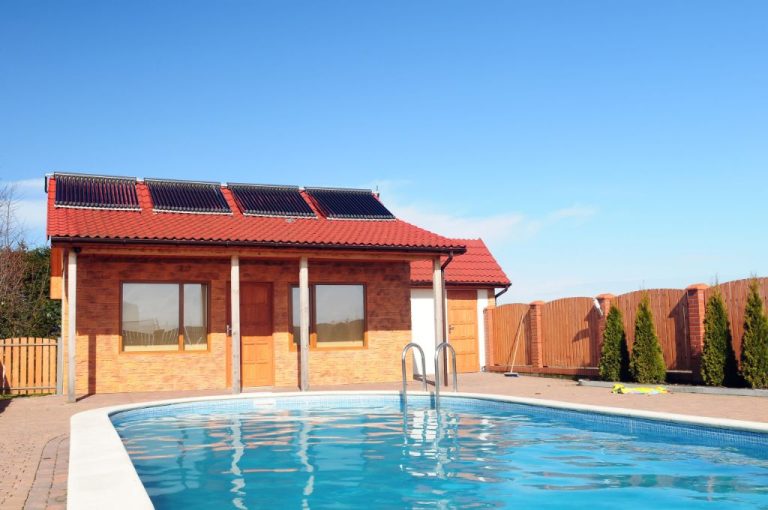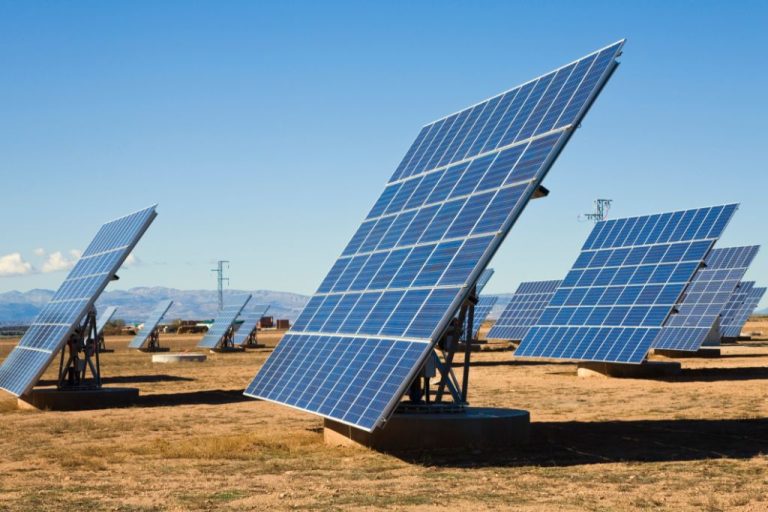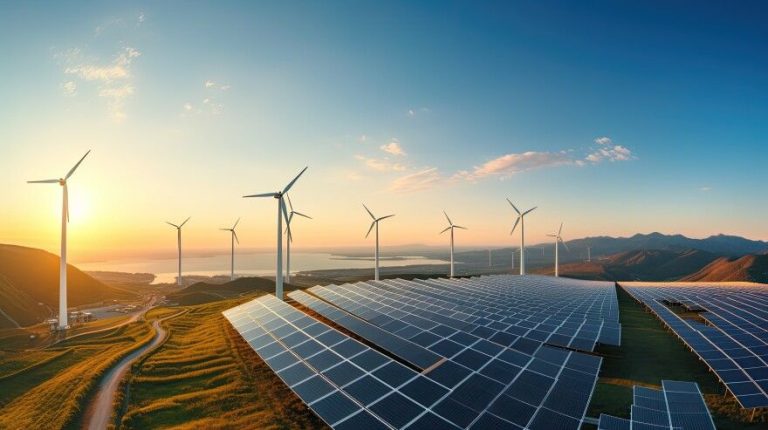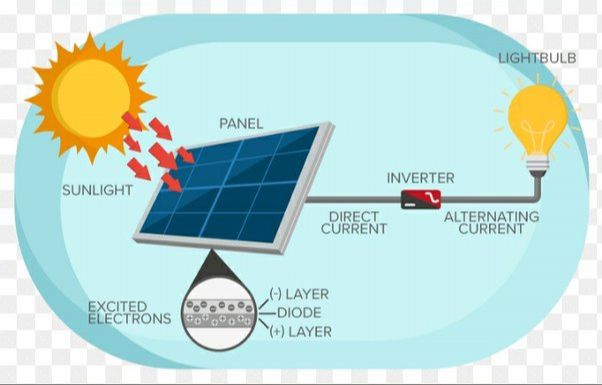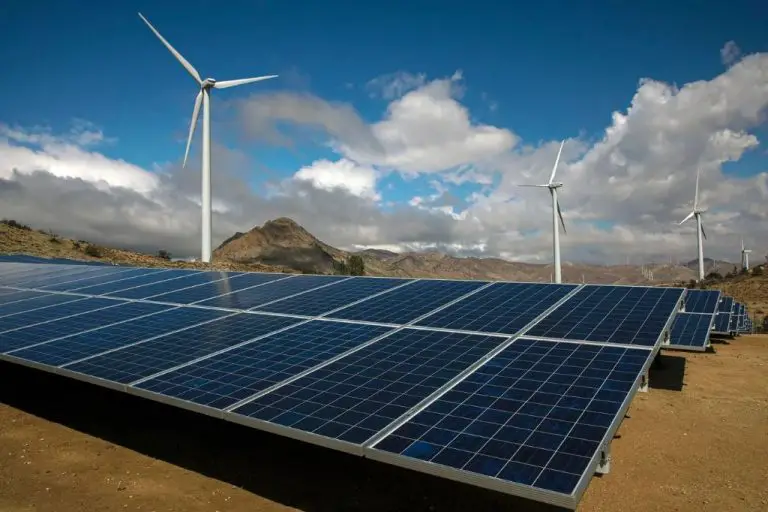What Are 4 Ways That Electrical Energy Can Be Generated?
Electrical energy generation is the process of converting other forms of energy into electrical energy. Having reliable and sustainable sources of electricity is crucial for powering homes, businesses, and industries in the modern world. There are several different technologies and resources that can be utilized to generate electricity.
Exploring various methods of electrical power generation is important as we aim to meet energy demands through clean, renewable sources. This overview covers four major ways electricity is currently produced globally, providing insight into how different technologies harness natural resources or fuel sources to generate usable electrical power.
Hydroelectric Power
Hydroelectric power generates electricity by utilizing the power of flowing or falling water. Typically, hydroelectric plants rely on dams that allow for control of water flow. The dam stores water in a reservoir and controls its release into a turbine generator below the dam. The moving water rotates the turbine, which spins a generator to produce electricity. Hydroelectric power provides almost one-fifth of the world’s electricity. It offers a renewable, emissions-free energy source. However, large hydroelectric dams may impact the environment by changing river flows and habitats. Overall, hydroelectricity serves as a major renewable electricity source due to its low operating costs and ability to quickly adjust power generation to meet demand.
Fossil Fuels
Fossil fuels like coal, natural gas, and oil are a major source of electrical energy generation across the world. Fossil fuel power plants burn these carbon-rich natural resources to heat water and produce high-pressure steam that drives turbine generators. Coal makes up the largest share of fossil fuel electricity production globally. At coal power plants, pulverized coal is fed into a boiler and burned at high temperatures, heating water in tubes that line the walls. This water turns into steam and flows into a turbine, spinning it to run an electrical generator.
Natural gas power plants work in a similar way, combusting the gas to heat water for steam to spin turbines. Oil can also be used to generate electricity at thermal power plants, though it is less common today than coal and natural gas. Fossil fuel power plants provide reliable, affordable electricity in many parts of the world. However, they also produce significant carbon dioxide emissions that contribute to climate change. Improving plant efficiency and adding carbon capture technology can reduce emissions from fossil fuel generation.
Nuclear Energy
Nuclear energy is generated through a process called nuclear fission. In this process, atoms are split apart, releasing a large amount of heat energy. The most common fuel used in nuclear fission is uranium. Inside a nuclear reactor, uranium atoms are bombarded with neutrons, causing them to split into lighter elements. This splitting process releases neutrons, which go on to split more uranium atoms in a chain reaction. The intense heat released by nuclear fission is used to boil water into steam. The high-pressure steam then spins a turbine connected to a generator to produce electricity. Nuclear power plants provide around 10-20% of the world’s electricity. Nuclear energy offers a reliable, low-carbon source of electricity that can supplement renewables like solar and wind power.
Solar Power
Solar power harnesses energy from the sun and converts it into electricity. There are two main technologies for generating solar power:
Photovoltaic Panels
Photovoltaic (PV) panels, also known as solar panels, absorb sunlight and convert it directly into electrical current. PV panels are composed of solar cells made from materials like crystalline silicon or thin-film semiconductor material. When sunlight hits the solar cells, electrons are knocked loose from their atoms, allowing electricity to flow. This electricity is then captured and utilized. PV panels are modular systems that can be installed on rooftops or integrated into buildings and connected to the electrical grid.
Concentrated Solar Plants
Concentrated solar power (CSP) plants use mirrors or lenses to concentrate a large area of sunlight onto a small area. The concentrated light is converted to heat, which drives a steam turbine connected to an electrical generator. CSP plants allow for the storage of thermal energy, so they can continue generating electricity even when the sun isn’t shining. CSP technologies include parabolic troughs, solar power towers, and solar dishes. Large CSP installations can provide utility-scale solar power.
Solar power provides a clean and renewable source of electricity that does not produce any greenhouse gas emissions. The amount of sunlight that reaches the Earth’s surface every hour is greater than the total amount of energy consumed by humans each year. Widespread adoption of solar power will help reduce reliance on fossil fuels and combat climate change.
Wind Power
Wind power is one of the fastest growing and most promising renewable energy sources. It uses wind turbines to generate electricity. Wind turbines work by converting the kinetic energy in wind into mechanical power. This spinning turbine turns a shaft inside the nacelle, which goes into a gearbox that increases the rotational speed to drive an electrical generator. So the mechanical power gets converted into electric power.
The amount of energy wind turbines can produce depends on the turbine’s size and the wind’s speed through the rotor blades. Today’s utility-scale wind turbines can reach over 500 feet tall, with rotor diameters over 400 feet across. Bigger blades can harness more wind energy. And turbines are being made even larger to maximize efficiency.
Wind power is considered a green technology since it doesn’t generate air pollution or greenhouse gases. It’s abundantly available in many parts of the world. And land around wind turbines can still be used for farming or grazing. However, turbines do impact local wildlife like birds and bats. There are also concerns about visual pollution and noise. But technological improvements are helping address these downsides.
Geothermal
Geothermal energy utilizes heat from deep within the earth to produce steam and generate electricity. The earth’s core is incredibly hot, estimated to be over 12,000 degrees Fahrenheit. By drilling wells into reservoirs of hot water found in underground fractures and faults, geothermal plants are able to tap into this vast internal heat source. The hot water is brought to the surface as hot water or steam to drive turbines that activate generators and produce electricity. Geothermal power plants typically use three types of geothermal energy sources: hydrothermal, enhanced geothermal systems (EGS), and geopressured. Hydrothermal reservoirs have natural underground pockets of steam or hot water that can be directly used. EGS involves injecting fluid into hot but dry rock formations to create an artificial geothermal reservoir. Geopressured systems use extremely hot water with high pressure. After driving the generators, the steam is cooled and condensed back into water, then injected back underground to be reheated again. Geothermal energy is considered renewable since heat is continuously produced inside the earth. With proper reservoir management, geothermal power plants can operate continuously at a specific site for decades.
Biomass
Biomass power plants burn organic material to produce electricity. Some of the most common types of biomass used for electricity generation include wood, agricultural waste, and garbage. At biomass power plants, the biomass feedstock is burned to heat water, which creates steam to spin a turbine and generate electricity.
The organic matter used for biomass power contains stored energy from the sun. Plants absorb the sun’s energy through photosynthesis. When biomass is burned, this stored solar energy is released as heat. Biomass power has the advantage of avoiding fossil fuels. However, there can be environmental impacts from growing and processing biomass crops. Overall, biomass represents a renewable energy source that can supplement the world’s growing electricity needs with reduced net carbon emissions compared to fossil fuels.
Wave & Tidal
The renewable energy of the ocean’s waves and tides can be harnessed to generate electricity. Wave energy converters capture the mechanical energy of ocean surface waves and convert it into electricity. Underwater turbines, similar to wind turbines, generate electricity from the kinetic energy of tidal currents. These wave and tidal technologies hold great potential as sustainable electricity sources.
The motion of ocean waves contains a tremendous amount of kinetic energy that can be tapped. Wave energy converters use floats, paddles, or other mechanisms to generate power as waves cause them to move up and down. The captured mechanical energy drives turbines to produce electricity. Wave farms consisting of multiple energy converters can be installed offshore or along coastlines.
Tidal power stations utilize the rise and fall of ocean tides to generate electricity. Tidal barrages are essentially dams built across tidal zones that create height differences and enable power turbines. Tidal stream generators operate like underwater wind turbines, where the tidal currents turn the blades to produce power. Both wave and tidal electricity generation methods are considered clean and renewable.
Conclusion
As we have discussed, there are many ways to generate electricity in the modern world. From traditional sources like hydroelectric dams and fossil fuel power plants, to newer renewable technologies like solar panels and wind turbines, humans have developed a diverse array of methods to produce this fundamental energy source.
While each generation method has its advantages and disadvantages, what is clear is that the future of electricity lies in the continued growth of renewables. As solar and wind power become more affordable and efficient, they are likely to play a larger role in energy grids around the world. Meanwhile, there is still room for improvement in many renewable technologies, suggesting exciting potential innovations in the coming years.
Overall, the outlook for sustainable and clean electrical generation is bright. With the right policies, investments and public support, we can transition away from polluting energy sources and toward a future powered by renewables. The technology exists – now it is up to society to fully utilize it. If we make wise choices today, we can ensure that our electrical grids are powered sustainably for generations to come.

